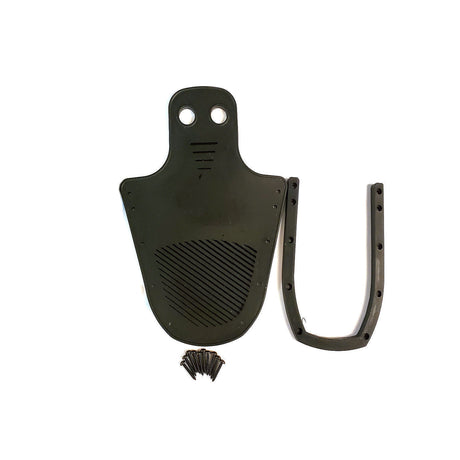We covered how to pick a life jacket based on buoyancy ratings and jacket type. Safety ratings are the most important aspect of a life jacket, but so is fit and comfort.
A comfortable life jacket ensures you're enjoying your time on the water. What's more, picking a jacket made from certain materials might not be ideal for specific water activities. Let's compare life jacket materials, including their pros and cons.
Life Jacket Materials Compared
First, let's compare the materials (or lack thereof) used to add buoyancy to life jackets, competition vests, and other personal flotation devices.
Buoyancy Materials
This is important in determining how thin or bulky a vest is (and, therefor, how well it fits) as well as how much safety it provides.
Foam

Pictured: Hyperlite "Domain" Men's Life Jacket
Most life jackets contain foam panels as the primary buoyancy material. Closed-cell foam, such as polyethylene or PVC foam, is often used because it is lightweight, and provides insulation against the cold. Foam panels are typically placed strategically throughout the life jacket to provide flotation while still allowing freedom of movement.
Advantages of Foam
Life jackets that use foam provide the best fit, and the most comfort. Those foam panels are cut and placed to move easily around joints, and they're usually divided up into parallel rows that bend easily around the chest and back.
It's this flexibility that makes foam life jackets and competition vests the flotation devices of choice for wakeboarders, wakesurfers, and water skiers.
The other advantage of foam vests is the simple fact that they don't require inflation. They're naturally buoyant, so they will always work when worn properly.
Disadvantages of Foam
Foam vests usually provide less buoyancy than air-filled vests. Foam can provide the same buoyancy and safety ratings as an air, but the amount of foam required to provide good flotation will typically make the vest large, bulky, and less flexible.
Inflatable Bladders

Some life jackets feature inflatable bladders that can be inflated manually or automatically upon immersion in water. These bladders are typically made from urethane-coated nylon, or PVC, and they're designed to provide buoyancy only when inflated.
Advantages of Air
Air-filled vests provide the most buoyancy, making them ideal for young children, deep-water activities, and emergencies.
Disadvantages of Air
Air-filled vests are stiff, and they only provide protection from drowning when inflated. Because of this, they're not ideal for wakeboarding or water skiing. They're mostly suitable for children and tube riding -- which requires little movement, other than hanging on tight! -- and, for adult wearers, are typically reserved for use in emergencies.
Jacket Materials

The external material that makes up your life jacket can make or break your day on the water. Some materials are better suited for specific watersports and activities.
Neoprene

Pictured: Hyperlite "Indy" Men's Neoprene Life Jacket
Neoprene is the best overall jacket material.
Neoprene has a squishy, rubber-like feel that's highly flexible. It's a soft material that's gentle on the skin, and it reduces the rashes and discomfort that other materials might cause when rubbed against wet and sun-soaked skin.
It's the perfect life jacket material for those who expect to be partially submerged or sprayed for long periods of time, making it the best life jacket shell material for wakeboarding and water skiing.
This is also why most Competition Vests are made exclusively with neoprene shells.
Mesh

Pictured: HO Atlas Paddle Vest
Mesh panels may be incorporated into certain types of life jackets -- particularly paddle vests and special flotation devices -- to improve breathability and comfort, especially in warm, sunny weather.
Mesh allows air to circulate freely, reducing heat buildup and helping the wearer to stay cool when they're static, but exerting themselves (like when paddling or rafting).
Nylon

Pictured: Connelly Kid's Little Dipper Nylon Life Jacket
Nylon is popular for its durability, water resistance, and quick-drying properties. Its high strength relative to its thickness makes nylon a great material for reinforcing lightweight life jackets without adding bulk.
Nylon is also great at providing high visibility. It's highly reflective, and it's gentle on the skin. Most children's life jackets are made from nylon.
Polyester
Like nylon, polyester is another synthetic material used in the outer shell of life jackets. It is lightweight, abrasion-resistant, and offers good UV resistance, making it suitable for use in outdoor water activities.
Vinyl
Vinyl-coated fabrics are sometimes used in life jackets to provide additional water resistance and durability. Vinyl-coated nylon or polyester fabrics can withstand prolonged exposure to water and harsh weather conditions.
Need a life jacket? Grab one here! We stock a huge selection of neoprene life jackets and comp vests, mesh paddle vests, and other life jackets for men, women, and children!












